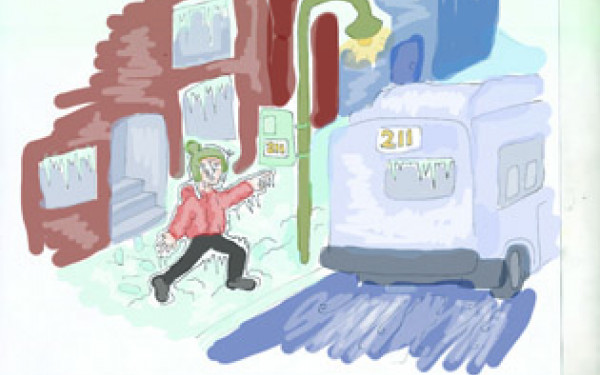The STM Has an Accessibility Problem
We have a decent public transit system in Montreal.
Sure, there are cities that have it far worse than we do, and the STM is continuously making strides to improve.
In spite of this, there are still issues with public transit—issues that are more serious than they might seem at first glance.
For many, public transit isn’t just an option, or the thing you use when you don’t want to think about parking. It’s our only way to get around this city.
I’m disabled. I can’t drive. And a lot of people are in similar situations. When it comes to transit, our disabilities aren’t the thing stopping us.
Accessibility is a major issue. Too many metro stations and bus stops aren’t wheelchair accessible. Most metro stations have a lot of stairs, and escalators that only work a fraction of the time. Our very own Guy-Concordia metro station is a culprit of all three.
Wheelchair users, as well as anyone else who cannot climb stairs, are left with few options. Should people just not go to these metro stations? There is constant conversation around how disabled people should be more independent, but there are structural factors that impede us. It’s impossible to be as independent as we’d like to be in a world that refuses to give us opportunities. When public transit is our only option and it isn’t accessible, we are left feeling trapped.
Unfortunately, the STM isn’t just a small part of our lives. Access to good transit informs where we live, where we shop and where we go to school. It even influences where we can work. If there is a job located in an area that isn’t accessible in some way or another, people will be forced not to take it, even if it offers a great salary and could potentially be career altering.
The main issue here is that the STM is not treated like a necessity, and disabled people are treated like rare instances. Who cares if not all metro stops are accessible? Who cares if the STM abandons certain individuals and certain areas of the city?
There seems to be an assumption that people can just grab their car and go, and if certain buses and metro stations aren’t accessible to everyone, they can easily find another one, right?
In reality, many people live with some form of disability or chronic illness. This shouldn’t be ignored just because it isn’t all people.
This stems from a weirdly common idea that people can just stop being disabled. This might sound obviously untrue, but deep down many individuals genuinely believe that there is always a way around something that is inaccessible. But sometimes, there isn’t—no matter how hard you try to believe in yourself, or repeat mantras like “the only disability in life is a bad attitude.” We cannot always control our situations, which is why we ask for accessibility.
People can’t stop being disabled, but we can make spaces accessible for us. We know how to build ramps, we know how to make the print on signs bigger and we know how to implement many other necessary things. We have the answers, so we need to take action.
Yes, it is impossible to accommodate everyone, but it is our responsibility to do the best we can. Accessibility isn’t something that only exists in a perfect world. If people are willing to put in the effort, it can exist right here in Montreal.

_900_600_90.jpg)
_600_832_s.png)


__600_375_90_s_c1.jpg)

